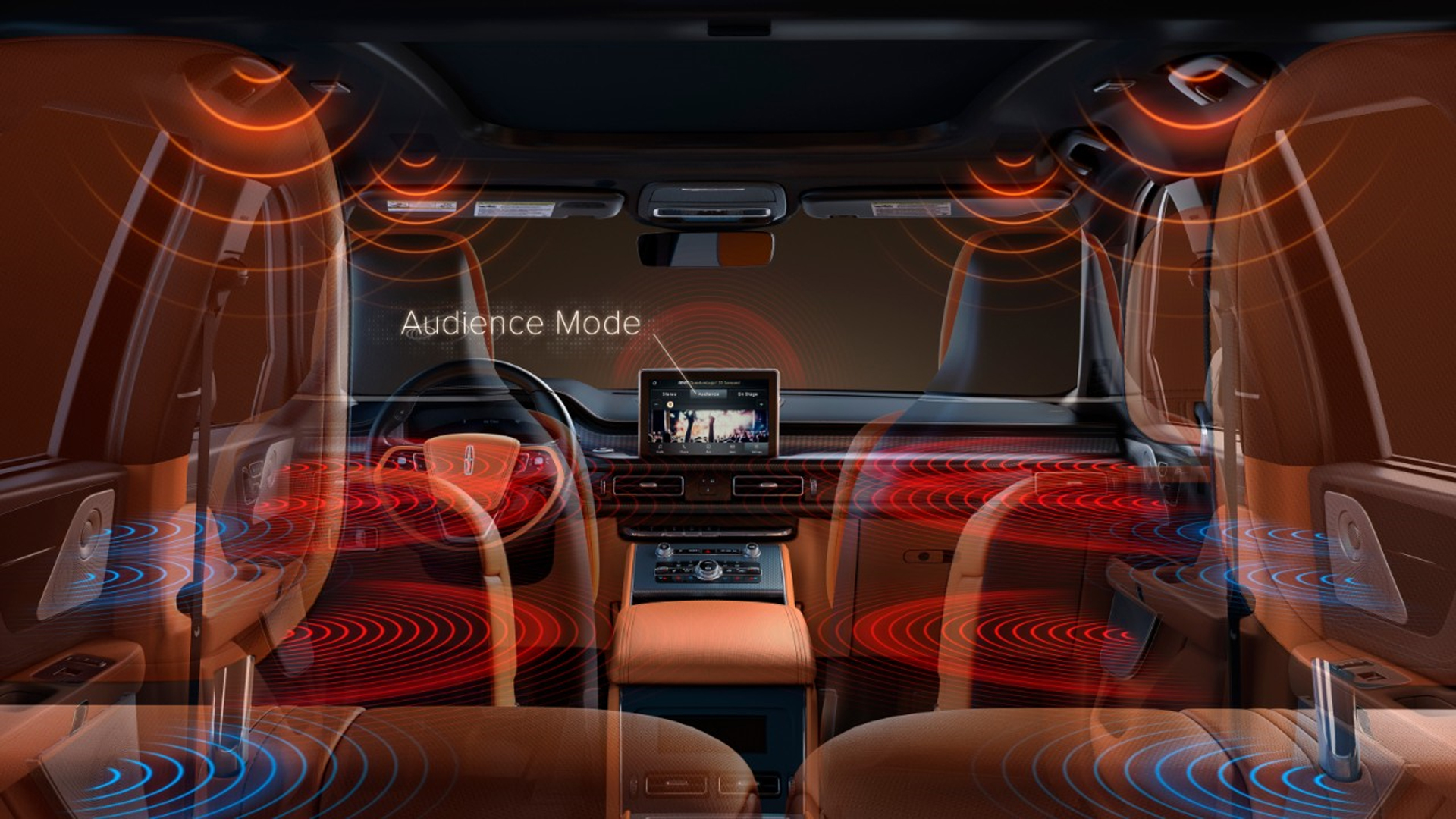

We may earn revenue from the products available on this page and participate in affiliate programs. Learn more ›
Edison Research says 70 percent of Americans age 13 and older listen to audio in the car each day, which is higher even than the portion who listen to audio in their homes. If you are in the other 30 percent, maybe you’re talking on the phone (or to yourself). Because who drives in total silence? (Other than a parent with toddlers at home and looking for some peace and quiet, potentially.)
The point is, a good audio setup can mean the difference between straight noise and music, working in tandem with noise-reduction materials inside the vehicle. Mediocre audio sounds like Ozzy Osbourne’s speaking voice on a bad day and a high-quality system more like Alicia Keys is hanging out in the seat next to you. If that sounds like an exaggeration, compare a four-speaker stock system in a car from ten years ago to a 28-speaker Revel array in a new Lincoln Aviator and you’ll understand.

In the case of the Aviator, the placement, tuning, calibration, and number of speakers are unique to that particular vehicle and designed for optimal audio quality and accuracy. That starts with two tiny (about one and a half inches each) speakers above each passenger in the front and second-row seats; these are integrated with three-way speakers in the doors and two-way front and rear speakers. Layer in three modes to customize the audio preferences: stereo mode, which places the apex of sound directly between two speakers; audience mode, which mimics a concert hall; or on-stage mode, which is immersive 360-degree sound.
Three kinds of speakers make up any audio system: tweeter, midrange, and woofer/subwoofer. If these three types have an imbalance, the sound will be overly bright, nasally, or rattle-your-teeth boomy, respectively.
Let’s break it down.
What it does: tweeter
- The smallest speaker, the tweeter is usually located in the door or dashboard
- Emits high-pitched notes
- If the other two speaker types are the muscle, the tweeter is the brains behind the music
- Without a tweeter, your music would sound muddy and muffled
What it does: midrange speaker
- This medium-sized speaker is typically placed in the doors or atop the dashboard
- Midrange instruments like guitars, piano, and vocals are front and center
- Creates the richness and clarity in your music for life-like vocal experience in your car
- If you were to turn the midrange to its lowest setting, your audio quality would be dull and lacking personality
What it does: subwoofer/woofer
- Large in size, these are typically placed in the doors and the rear of vehicle
- Generates bass and low notes in your music
- Think drums and bass guitars, which give you the reverberation you’d associate with the sound
- Adjust the bass way up on the equalizer and the boom, boom, boom will take over the melody
Including the types of speakers, placement matters too, as everything from the grid spacing of the speaker overlay to contours of the vehicle can affect the sound. In the Aviator, external noise is filtered out by interior and exterior noise control features. An acoustic laminated windshield, side glass, and acoustic underbody shields; wheel arch liners; quiet doors; and a chassis tuned to reduce low-frequency rumble from the road all help with that too.
The Lincoln is on the pricey side, though. It starts at $51,100 and can go up to nearly $90,000 with all the boxes checked. What if great audio doesn’t have to break your budget? Take a look at the Mazda CX-30, which includes a dynamic sound experience for less than $30,000.

In the CX-30, subwoofers are stabilized in special boxes designed to improve resonance and reduce rattle. What’s more, all of the speakers are placed to funnel sound toward the ears of the front passengers, not ricocheting around the vehicle. A similar set of speakers is set up in the back doors, and an optional upgrade is available with a subwoofer in the trunk and other speakers to create a surround-sound experience.
Mazda says its audio engineering team moved the side speakers in CX-30 from their traditional location in the doors forward to the footwells, eliminating more road noise and vibration. The cabin’s two-layer wall structure incorporates an insulating layer to further dampen unwanted sound, and holes were eliminated throughout the cabin where possible for more cocooning. Even the floor mats and tires were selected to reduce noise. (They’re not the Rolls-Royce Ghost’s lambswool floor mats, but hey.)
The automaker went a step further for the CX-30, studying human physiology to position the speakers for optimal sound playback and transmission to the human ear. They claim this has the effect of balancing out the audio while increasing the dynamic bass range and enhancing mid-range sound clarity; the result evokes an experience reminiscent of a sound studio.
For the amount of time we all spend in our cars, why not enjoy the ride with audio that doesn’t insult your ears with tinny, drab sound?
Got a tip? Send us a note: tips@thedrive.com